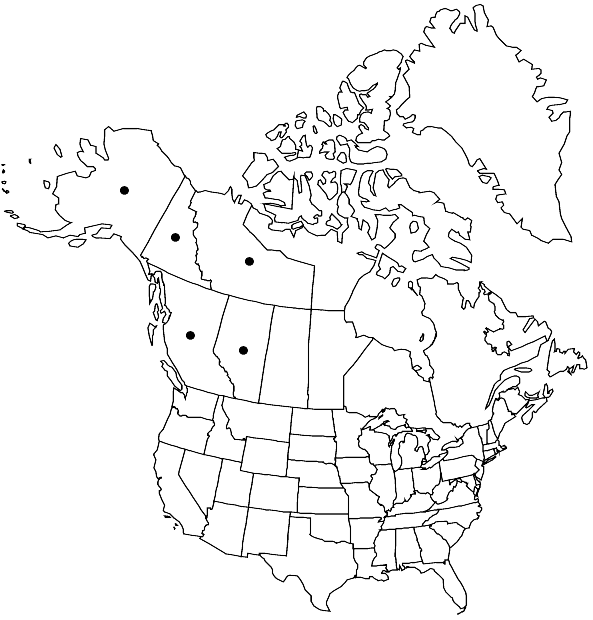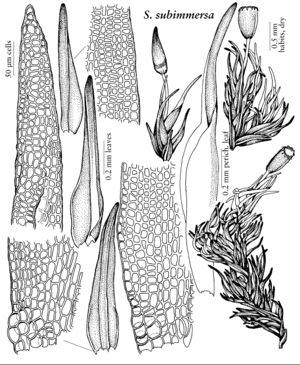Seligeria subimmersa
Musc. Scand., 25. 1879,.
Plants small, black to green-black. Leaves linear-lanceolate to obovate lanceolate, stoutly subulate, from obovate to ovate base, narrowly obtuse; costa ending in apex, filling subula; margins entire; leaf cells (1–) 2: 1; perichaetial leaves somewhat larger, similar to vegetative leaves, not much differentiated. Seta 1–1.5 (–2) mm, straight, curved, or abruptly bent at capsule. Capsule ovate to oblong, as long or slightly longer than wide; peristome of 16 well-developed teeth, often broken when old; columella immersed. Spores 10–13 (–15) µm.
Habitat: Calcareous rocks
Distribution

Alta., B.C., N.W.T., Yukon, Alaska, Europe
Discussion
Seligeria subimmersa is found from Alaska and the Yukon south along the Canadian Rocky Mountains to Alberta. It and S. polaris are two closely related species that share black coloration, branched turf-forming plants, subulate leaves with the costa filling the apex, and relatively well-differentiated alar cells. From the latter species, S. subimmersa is distinguished by smaller spores (10–15 µm), smaller stouter leaves that are more stiffly twisted, bent seta, and more ovate capsules. This rare species somewhat resembles the more common S. calcarea; the latter, however, has somewhat larger spores, and much smaller gametophores.
Selected References
None.
